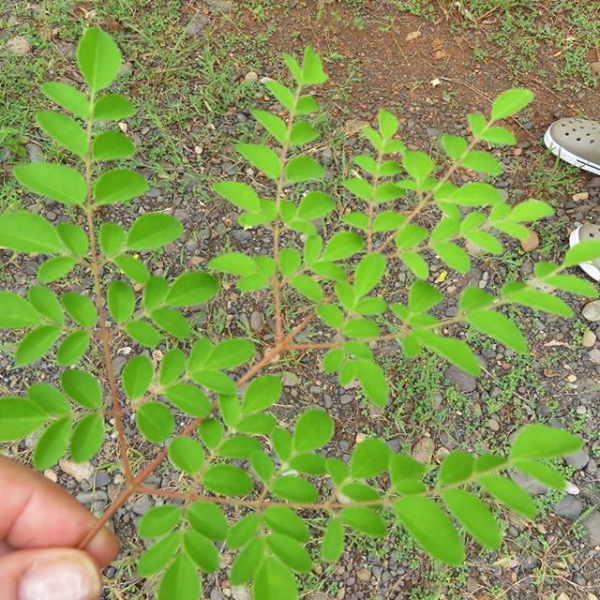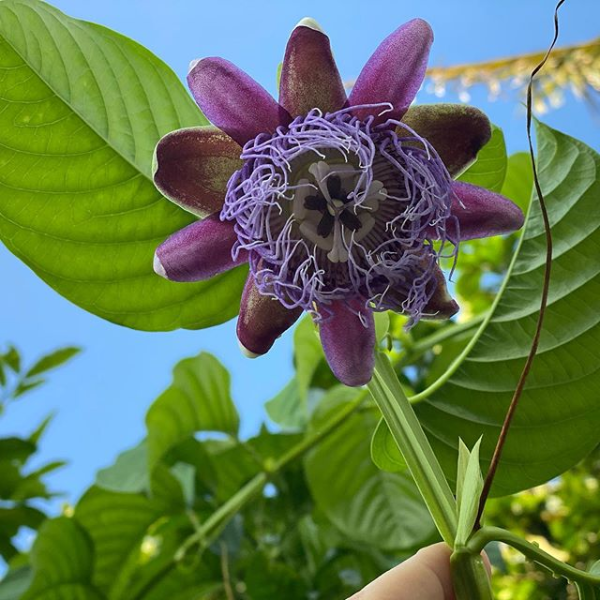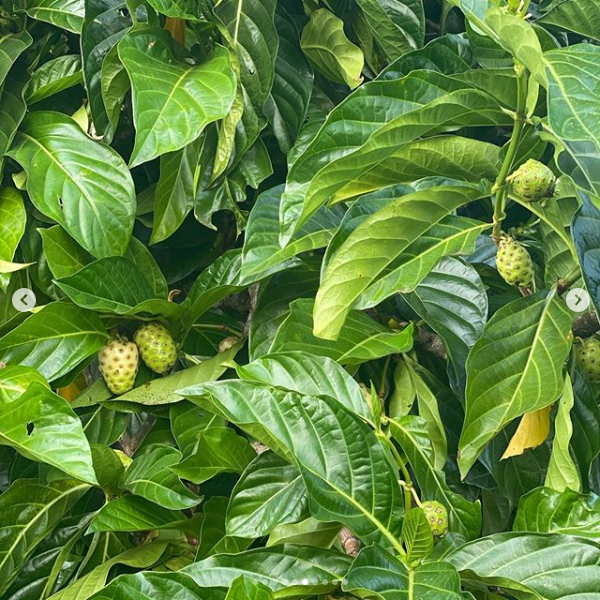Regenerative agriculture is a long-term, holistic design that attempts to grow as much food using as few resources as possible in a way that revitalizes the soil rather than depleting it, while offering a solution to carbon sequestration. The mantra is the slogan: “Healthy Soil = Healthy Food = Healthy People.”
Many of the practices associated with regenerative farming are management practices associated with organic agriculture to build soil health, promote nutrient retention, and encourage pest and disease resistance. However, regenerative farmers have zero-tolerance for synthetic pesticides, fertilizers, and other inputs that disrupt soil life.
FOOD FOREST AND EDIBLE LANDSCAPING:
Cultivating healthy food is noble, we do it through cultivating healthy people and soil. Medicinal food is the center of our community. Our food forest starts at the fresh water spring nearest the community center and continues for miles. Our forest gardens and landscaping produce tons of food. We have terrace gardens and swales to catch water and send it into the ground, building our aquifer. We believe the forest is the best garden. It is its own ecosystem, never needing outside fertilizer, watering, pesticides, herbicides, fungicides, etc.
We promote a healthy living soil. Our soil is an ecosystem in itself. We produce over 5,000 kilos of mangoes each year. There are hundreds of mature fruit-producing trees and over a hundred and thirty varieties. Each property is planted with an edible landscaping full of pineapples, bananas, plantains, oranges, limes, lemons, papaya, turmeric, ginger, teas, edible flowers, katuk, chaya, saragundi, yuca (potato), moringa, okinawan spinach, and much more. Scroll down for the big list!
TAKE A TOUR:
Regenerative agriculture practices for healthy food and environment:
We start with building a healthy living soil through a fermented additive called bokshi. Bokhsi is
filled with Myceilum that helps break down organic material to be used by plants and also
helps plants withstand drought by accessing up to 2000 times more water by adding hairlike
fibers connecting roots to water in rocks and other hard to reach places. The healthy living soil
and effective micro organisms also cleans orders and kills bad bacterias and viruses. You can
stand in the Permacuture Country Club coral 40 minutes after it was used to collect animal
manure and urine, and it will smell fresh and clean do to the microbial activity. This magical
fungus can connect the plants to allow them to share nutrients, water, and communicate. Paul
Stamets named the “use of fungi to degrade or remove toxins from the environment”
Mycoremediation. Our hero, Staments states that fungi can be used to clean up
polychlorobiphenols (PCBs), fertilizers, munitions, dyes, estrogen-based pharmaceuticals,
neurotoxins — including DDT — dioxins, mercury, and stored nerve gas.
By using no till agriculture and cover crops we help the soil thrive by not baking the effective
mico-organanism life in the sun.
Our use of contour swales store rain water into the ground and aquifer instead of letting it run
down to the creek and nearby ocean.
Eliminating the need for synthetic chemicals saves more than just money. It could save the
earth. Farmland all over the world and water is becoming polluted by agriculture to the point it
cannot be used for food or even habitated by humans. By making our own natural fertilizers,
pesticides, fungicides, we ensure the highest quality natural products and protect the
waterways, aquifer, and ocean from toxic chemicals in the watershed.
We shade water with rare hardwoods to give shade and seeds for tree that are in extreme
danger of extinction.
We have a living seed bank of over 500 different types of plants because plants and humans
thrive best with diversity.
The cattle in our holistic care don’t need water that would be used for human consumption.
The animals here have spring water and water from rain water collection systems. We grow
superfoods and medicine for ourselves and the treatment of our beloved animals. The
medications we use for holistic care are grown onsite. We use strong bitter herbs like Hombre
Grande, Neem, Garlic, Saragundi, Papaya seeds, and other bitters to keep insects off our
animals and to deworm them. We practice rotational grazing to improve the health of our
animals and soil.
We use hugelculture to create healthy soil and upicycle rotten untreated wood.
Our living healthy soil and regenerative systems improve:
medicinal gardens,
botanical gardens,
zero waste practices,
upcycling, recycling, agroforestry/food forestry, making natural fertilizers on sire
Our swales on contour
Over 500 Plant Varieties and Counting:










Full list below (a work in progress!)
Acerolea
Achachairu, aka Honey Kiss fruit / Orange mangosteen
Achiote
African Milk Plant (Euphorbia trigona)
Agave americana
Albizia julibrissin, the Persian silk tree.
Allamanda iolacea
Allspice
Aloe
Andrographis paniculata
Angelica
Anisillo (aka Piper auritum, Piperaceae)
Annona rosada
Annona
Araza
Artemisia
Artichokes, Jersualem
Arugula
Ashwagandha
Asparagus
Astralagus
Avocados, butter
Avocados, catilina
Avocados puerto rico
Avocados creole
Bálsamo Myroxylon balsamun (critically endangered)
Bamboo
Bamboo, Black
Bamboo, Budda’s Belly
Bananas, Dwarf
Bananas, Purple
Bananas, Red
Bananas, Lady Finger
Bananas, Praying Hands
Banyan Tree
Beach Almonds
Beets
Bele tree spinach
Betelnut
Bird of Paradise (used to filter grey water and add beauty)
Biriba (Rollins mucosa)
Black Java bamboo (for erosion control and building material)
Black Pepper
Black Sapote, the chocolate pudding fruit
Blackberry Jam fruit
Blue bush (Justica tinctoria)
Blue Sky vine (thunbergia)
Bougainvillea
Borneo Cherry
Brami (bacopa monnier), aka Water Hyssop or Herb of Grace.
Brazilian Red Pepper
Brazilian Spinach
Brugmansia / Angel’s Trumpet (used as insecticide)
Breadfruit (multiple varieties)
Broccoli
Bush Beans, aka French beans
Bursera simaruba, aka Naked Indian or Gumbo Limbo.
Brussels Sprouts
Butterfly Pea (Clitore turnatea)
Cabbage (including Wong bok wong nga and napa)
Cacao theobroma
Cacao esmeralda
Cacao, White
Caimitios
Calea
Canna Plant (used to filter water and add beauty to the landscape)
Canister oro
Canastaña (bread nut)
Cantaloupe
Capulin
Capsicum annum
Calamundin
Cardamom
Carao (Cassia grandis)
Carrot
Cas, Brazilian (can be made into a delicious drink)
Cashew, Creole
Cashew, Jumbo Red
Cashew, Jumbo Yellow
Castor Bean Plant (Ricinus communis)
Cats Claw
Cauliflower
Caviar Limes
Celery
Cedro amargo / Cedrela odorat (species listed as vulnerable)
Clementine
Chempadek
Charcruna Psychotria viridis
Chaya (aka tree spinach)
Chayote
Cheilocostus speciosus (aka Spiral Ginger)
Cherimoya (Annona cherimola)
Chiquiskil
Chinese bitters
Chinese Cabbage
Chives
Chocolate Mint
Chocolate Pudding fruit
Cilantro
Cinnamon
Citronella / Cymbopogon
Cocoa
Coconut, Amarillo
Coconut, Dwarf
Coconuts, King
Coconuts, Native
Coconuts, Verde Pipas
Cotton, Gossypium herbaceum
Coffee
Cola de Caballo
Collard greens
Corteza Amarillo / Tabebuia ochracea
Corteza Morado (Tabebuia rosea; near extinct fusha tree)
Coyol Palm
Cow peas / Black-eyed Peas
Cranberry Hibiscus
Cristóbal (Platymiscium pinnatum) critically endangered rare hardwood
Croton (Codiaeum variegatum)
Cucumber
Culantro
Culantro coyote
Cupuaçu
Cupalu
Curry tree
Cycad revoluta
Damiana
Dragons blood
Dragon Fruit, Red
Dragon Fruit, White
Dragon Fruit Yellow
Dream Root
Desert Rose (Adenium)
Durian
Eggplant
Endive
Favarva Bean
Fennel
Ficus citrifolia an enormous tree that grows up to 30 meters. Locally called Higeron, aka wild banyantree, it is considered a tropical keystone species. Figs are a major component of the diets of more species of animals than any other tropical perennial fruit. Since F. citrifolia fruits year round, many primates, birds and other species feed exclusively on figs during seasons when other fruit is scarce. Additionally, the knobby, hollow, lattice-like trunk of this tree provides a home for thousands of invertebrates, rodents, bats, birds, and reptiles.
Figs
Frarylecaillo
Galanga
Garcia Hombriana
Garlic Vine
Guanabana (Annona muricata) aka Soursop
Guanabana, Yellow Mountain
Gavilana (Neurolaena lobata) aka Jackass Bitters
Ginger
Ginger, White (Hedychium Coronanium)
Golden Berry
Golden Chain Tree (Laburnum anagyroides)
Golden Shower Tree (Cassia fistula)
Gotas de Oro
Gotu Kola
Granada
Grapefruit
Grumichama (a Brazilian cherry)
Grarumo (Cecropia peltata) a pioneer plant.
Guava
Guava, Giant
Lorito Fruit (Cojoba arborea)
Hawaiian Woodrose
Hibiscus vitifolius
Hoja Curry
Hombre Grande
Ice Cream Bean
Insulina
Ivy
Ixora (erosion control plant)
Jaboticaba
Jacaranda
Jackfruit, Red
Jackfruit, Orange
Jalapeño
Jathopra
Juanaylama Lemon
Kalanchoe
Kapok Tree (Ceiba pentandra) draws water up from the ground.
Katuk
Kefir Lime
Kohirabi
Kong (water spinach)
Kumquat Oranges
Langsat
Lanna (water filtration flower)
Lansin
Leeks
Lemon Balm
Lemon Drop Mangosteen
Lemon Grass
Lemon, Americano
Lemon, Citron
Lemon, Mandarina
Lemon, Messen
Lemon Verbena (Aloysia citrodora)
Lettuce, Butter
Licorice
Limeberry
Longan
Loofah sponge
Lucky Bean
Lucky nut
Lychee
Mabolo
Madagascar Periwinkle (Catharanthus roseus)
Madero negro
Malabar Chestnut
Malabar Spinach
Mamon Chino
Mango, Caribbean
Mango, Creole
Mango, Bubblegum
Mango, Irwin
Mango,Tommy
Mango, Verde Sweet
Mangosteen, Purple (the “queen of fruits”)
Manzanas de Aqua (Water Apples)
Marang
Malanga
Mazote
Mamoncillo (Melicoccus bijugatus)
Melissa officinalis
Mexican Sunflower (Tithonia diversifolia)
Mimosa hostilis
Mimosa pudica
Mint
Miracle Fruit (makes sour taste sweet!)
Momordica charantia
Moringa (Moringa oleifera)
Morning Glory (Ipomoea mauritiana)
Mugwort
Mulberry
Mushrooms (multiple varieties)
Mustard Greens
Nance
Neem
Nispero (loquat)
Noni
Nopal
Okinawa Spinach
Okra
Okra, Red
Oleander tree, Yellow (Thevetia peruviana)
Onion
Olosapo
Oranges, Agria
Orange, Blood
Oranges, Bergamont
Oranges, Ortiga
Oranges, Orlando
Oranges, Valencia
Oranges, Washington
Oregano
Pak Choy
Palm Grass
Palma Real
Papayas (multiple varieties)
Parsley
Passion Fruit
Passion Fruit, Madacuar
Pataste
Peach Palm
Peanuts
Pennyroyal
Phyllanthus niruri / Chanka Piedra
Physic Nut
Pigeon Pea
Pink Shower Tree
Pitanga, Purple
Pitanga, Red
Plantain
Plumeria
Pole Beans
Potato
Prickly Pear (Opuntia) edible cactus, aka Tuna
Pumpkin
Purslane
Radish
Rambutan
Rice
Ronrón (Astronium graveolens) red hardwood
Rosa de Jamaica
Rose Apples
Rosemary
Sagu
Sanipine grass
Sarsparilla
Sugar Apple
Sugar Cane
Salvia
Salak
Santoles
Sapodilla
Sapote, multiple
Saragundi
Seashore Mangosteen (Garcinia hombroniana), rare red mangosteen fruit
Shallots
Shampoo Ginger
Snakewort
Snow Peas
Soap Nut
Souroubea Gilgii (aka Sin Suesto)
Spinach
Spiral Ginger (Cheilocostus speciosus)
Squash
Starfruit (aka carambola)
Strawberry Guava
Sunflower
Sugar Apples
Sugar Cane
Sweet Potatoes
Tabacón (Anthurium salvinii)
Tamarindo
Tarap
Taro
Tarragon, French
Teak
Teatree
Thai peppers
Tilo
Tiger Orchid (Grammatophyllum speciosum) aka queen of the orchids
Tiny Bananas
Tobacco
Tomatoes, multiple varieties
Tulsi / Holy Basil (Ocimum tenuiflorum)
Tumbergia grandiflora (purple shade vine)
Tuna
Turmeric
Turmeric, Jumbo
Turmeric, Purple
Turmeric, White
Turmeric, Yellow
Turnip
Vetiver
Vanilla
Vinca (Catharanthus roseus) aka Perrywinkle
Wandering Jew (now purple heart) / Tradescantia pallida
Water Hyacinth
Watermelon
Watermelons, Square
White Palm (Brahea armata)
Winged Bean
Yam
Ylang Ylang (Cananga odorata) in Chanel No. 5
Yucca
Yuplon
Zapote
Zapote Columbiano
Zucchini
